Altan T. Metal Forming Handbook
Подождите немного. Документ загружается.

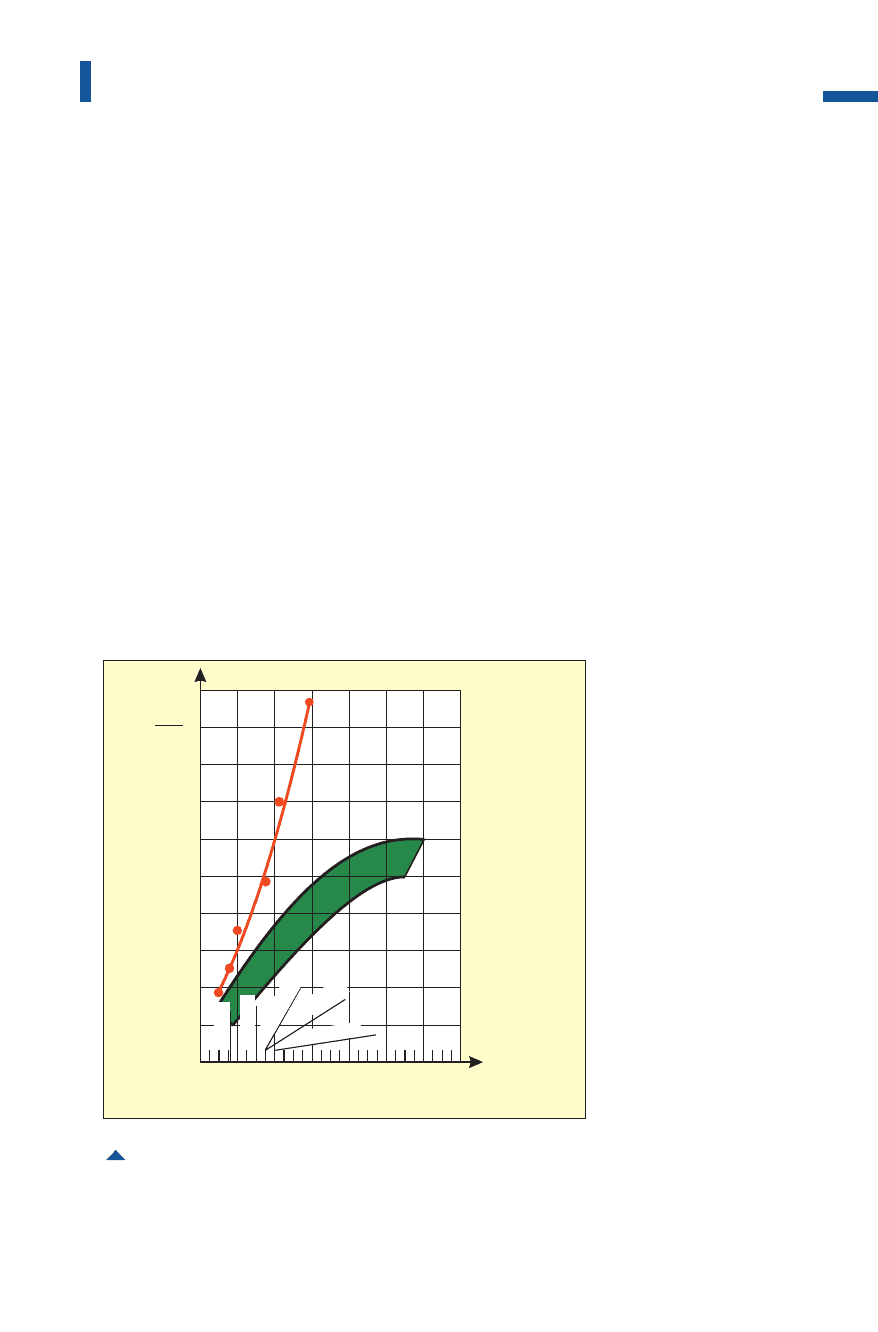
not been soft annealed: The microstructure comprises ferrite and perlite.
The hard cementite plates have to be broken through when the blanking
punch penetrates the material. The result is tearing of the cut surface.
The illustration at the top left of Fig.4.7.10shows the C45 in a soft
annealed state, spheroidized: The microstructure comprises a ferrite
matrix with spheroidal cementite embedded in it. Here, the spheroidal
cementite grains are not divided during the blanking process, but
pressed into the soft ferrite matrix: The blanking process takes place
without tear formation.
With an increasing carbon and alloy content, the tensile strength of
the material in the non-annealed and soft-annealed state (Fig.4.7.11)
increases. C45 which is not soft-annealed has a hot forming microstruc-
ture with a strength of around 700 N/mm
2
. Where C45 has an opti-
mum soft annealing microstructure, i.e. extra soft spheroidized, its ten-
sile strength lies at around 480 N/mm
2
, while the corresponding value
for the standard spheroidized quality more commonly used for fine
blanking is 540 N/mm
2
.
341
Fine blanking
Fig. 4.7.11 Dependency of tensile strength upon the proportion of carbon/alloys in
unannealed aand annealedb steels
tensile strength R
m
[%]
C content
350
400
450
500
550
600
650
700
750
850
0
0.2 0.4 0.6 0.8
1 1.4
1.2
16Cr3
16Ni14
16MnCr5
25Cr
Mo4
34Cr4
a:
normalized
steel
b:
steel with
90-100%
spheroidal
cementite
N
mm
2
[ ]
Metal Forming Handbook / Schuler (c) Springer-Verlag Berlin Heidelberg 1998

Determining the degree of difficulty
The slide force F
St
[N] during fine blanking is
with the blanking force F
S
[N]:
To calculate the blanking force, the sheet metal thickness s [mm], the
tensile strength of the material R
m
[N/mm
2
] and the length of the cut
contour l
s
[mm] is required (cf. Sect. 4.5). For circular hole punching,
for example the following results:
Depending on the prevailing conditions, factor f
1
[–] can fluctuate
between 0.6 and 1.2. In order to ensure a sufficient blanking force, in
practice 0.9 is taken for f
1
. This takes into consideration the influences of
blanking edge properties (blunting and surface roughness of the blank-
ing elements, sheet metal thickness tolerance and alteration of the blank-
ing clearance as a result of abrasive wear).
The counterforce F
G
[N] is calculated from the surface area A
G
[mm
2
]
under pressure by the ejector and the counterpressure q
G
[N/mm
2
]:
The value q
G
lies between 20 N/mm
2
for thin parts with a small surface
area and 70 N/mm
2
for larger parts. The counterforce F
G
must be select-
ed in such a way that the required cut surface quality and optimum
evenness of the part are achieved. As the counterforce must be over-
come directly by the blanking force, an excessively high counterforce
exercises the same effect as if the sheet were of a higher strength level
or thickness. In this way, the high counterforce also influences the ser-
vice life of the die. The punch stress and the force exerted by the punch
both increase. Depending on the part geometry, the counterforce
amounts to between 10 and 25% of the blanking force.
With the help of this information and the surface area A
st
[mm
2
] of
the hole punch with the diameter d [mm], which is:
342
Sheet metal forming and blanking
FFFN
St S G
=+
[]
,
FlsRfN
SS m
=⋅⋅ ⋅
[]
1
ldmm
S
=⋅
[]
π
FAqN
GGG
=⋅
[]
A
d
mm
St
=
⋅
[]
2
2
4
π
,
Metal Forming Handbook / Schuler (c) Springer-Verlag Berlin Heidelberg 1998

it is also possible to determine the mean pressure p
m
[N/mm
2
] ap-
plied on the punch:
or when punching a hole, whereby the counterforce is generally tak-
en as 10% of the punch force:
The mean pressure p
m
must not exceed the 0.2% compression limit R
p0.2
[N/mm
2
] of the perforating punch (p
m
#R
p0.2
). Accordingly, on the basis
of the previous equation for the maximum ratio of sheet metal thickness
s to perforating punch diameter d, the following equation results:
If we assume that the perforating punch is made of high-speed steel
S6-5-2 with R
p0.2
= 3,000 N/mm
2
and HRC 63-64 and that the tensile
strength of the fine blanking material is 500 N/mm
2
, the following s/d
ratio results when blanking with counterpressure:
and when blanking without counterpressure:
This maximum s/d ratio is generally assumed to be 1 in normal shear-
ing practice.
Part configuration: flat and formed
The geometric shape of a part, the thickness of the sheet metal and the
characteristics of the material determine the production possibilities
available by fine blanking. In order to ascertain whether a part can be
manufactured using fine blanking, its degree of difficulty is determined:
S1 (easy), S2 (medium), and S3 (difficult). Here, the various formed ele-
ments such as slot widths, section widths, hole diameters, tooth forms,
corner angles and radius must be evaluated with the aid of Fig. 4.7.12.
343
Fine blanking
p
FF
A
N
mm
m
SG
St
=
+
2
p
sRf
d
N
mm
m
m
=
⋅⋅ ⋅
44
1
2
.
s
d
R
Rf
p
m
≤
⋅⋅
[]
02
1
44
.
.
–
s
d
≤
⋅⋅
==
3000
4450009
3000
1980
150
,
..
,
,
.
s
d
≤
⋅⋅
==
3000
450009
3000
1800
167
,
.
,
,
.
Metal Forming Handbook / Schuler (c) Springer-Verlag Berlin Heidelberg 1998
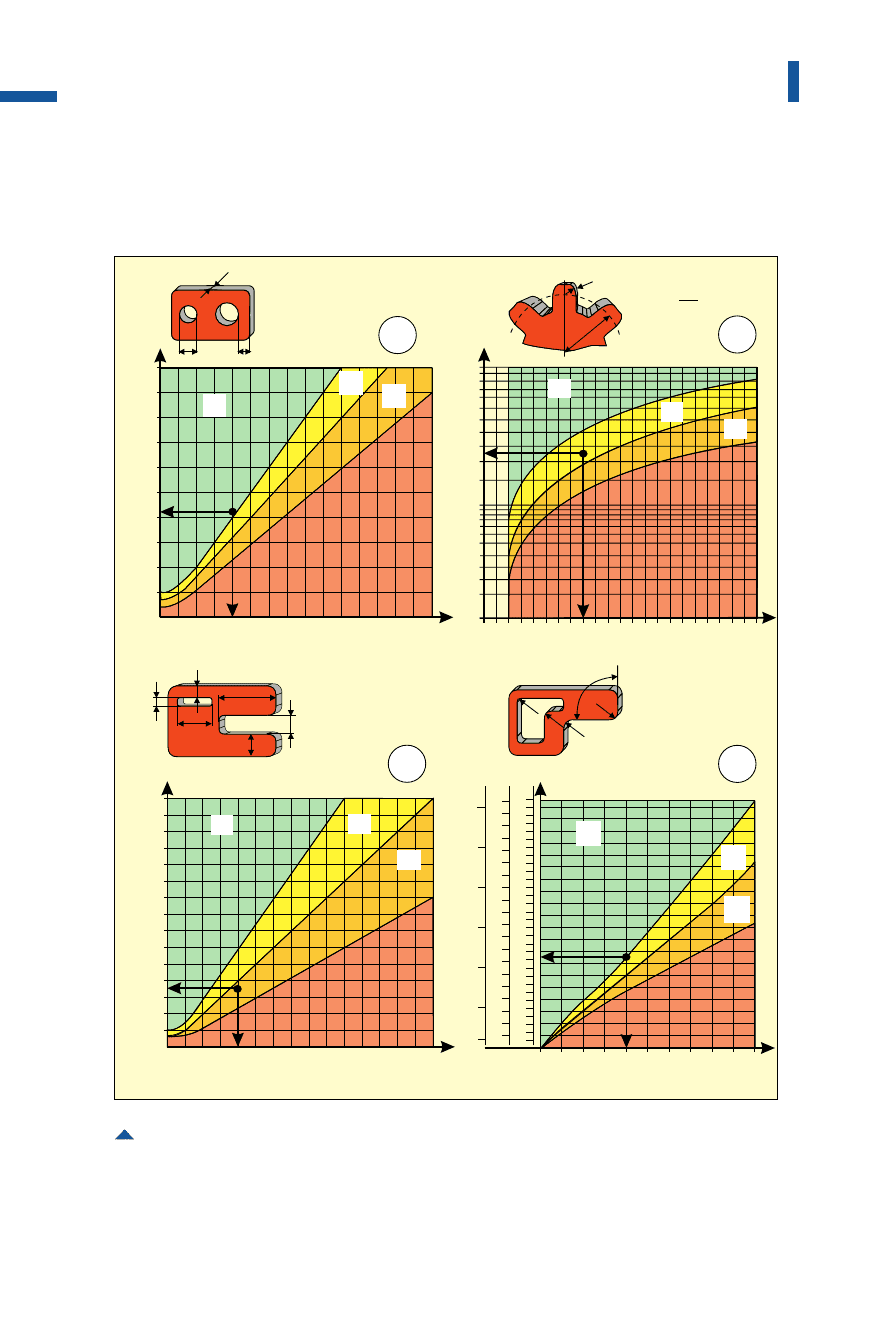
The highest single degree of difficulty determines the overall difficulty
level of the part. Under the limiting line S3, fine blanking does not offer
the necessary process reliability using classical tooling technology.
344
Sheet metal forming and blanking
Fig. 4.7.12 Dependency of the degree of difficulty of a fine blanking part upon the thickness/
geometrical shape: hole diameter/section width (A); tooth module (B);
slot/section (C); radii (D)
d
S
a
S1 degree of difficulty 1
a
min.
= 0,6 s
d
min.
= 0,6 s
S2 degree of difficulty 2
S3 degree of difficulty 3
0
1
1
0,5
2
3
4
5
6
7
8
9
10
2 3 4 5 6 7 8 9 10 11 12 13
14 15
S2
S3
S1
s
0.1
1
2
34
5
67
8
9
10
11
0.2
0.3
0.4
0.5
1.0
1.5
2.0
3.0
4.0
6.0
8.0
10.0
tooth module m
S1
S2
S3
S1 degree of difficulty 1
a
min.
= 0,6 s
d
min.
= 0,6 s
I
max.
= approx. 15 a
S2
degree of difficulty
2
S3
degree of difficulty
3
0
1
1
2
0,6
3
4
5
6
7
8
9
10
11
12
13
14
15
2 3 4 5 6 7 8 9 10 11 12 13
14 15
S1
S2
S3
a
b
l
l
b
a
r
i
r
a
R
i
R = 0.6 R
ia
r = 0.6 R
ia
r=R
aa
r=R
ii
R
a
a
123456789
10
0.1
0.1
0.5
1.0
1.5
2.0
2.5
3.0
0.1
0.2
0.3
0.4
0.5
0.6
0.7
0.8
0.9
1.0
1.1
1.2
1.3
1.4
1.5
0.2
0.3
0.4
0.5
0.6
0.7
0.8
0.9
1.0
1.1
1.2
1.3
1.4
1.5
1.6
1.7
1.8
1.9
2.0
30
°
60
°
90
°
S3
S2
S1
r
m =
2r
z
z: no. of teeth
A
B
C
D
hole diameter d, section width a [mm]
sheet metal thickness s [mm]sheet metal thickness s [mm]
sheet metal thickness s [mm]sheet metal thickness s [mm]
slot a, section b (mm)
radius r
a
R
a
[mm]
120° corner angle a
Metal Forming Handbook / Schuler (c) Springer-Verlag Berlin Heidelberg 1998
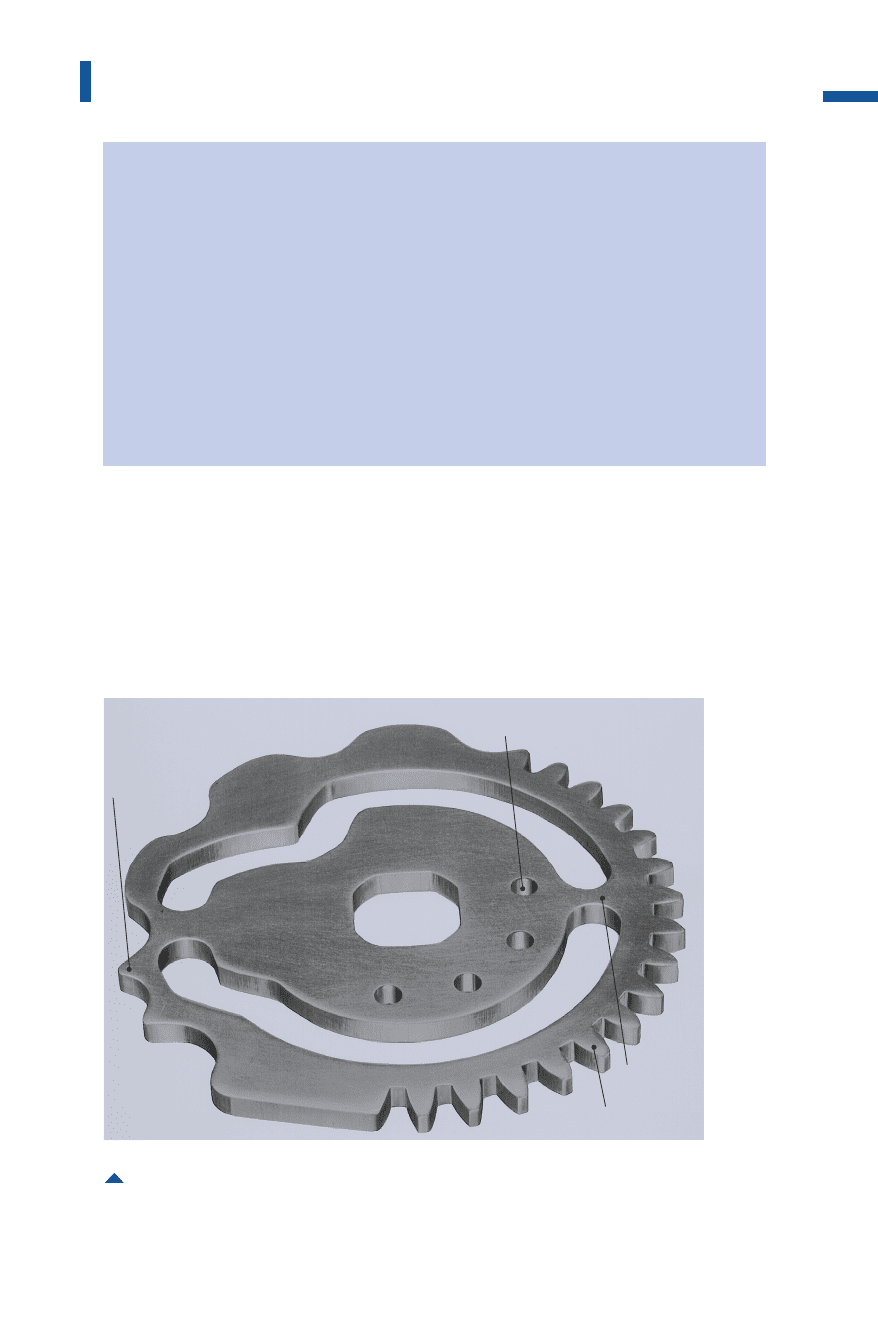
Example:
We wish to produce an index cam with a thickness of 4mm in C15 (spher-
oidized) with a tensile strength of 420 N/mm
2
(Fig. 4.7.13). The following form-
ing elements are included and assigned to their respective degrees of difficulty
in accordance withFig. 4.7.12:
–hole diameter d (mm): 4.1 S1
–section width b (mm): 3.5 S3
–module m: 2.25 S2
–radius R
a
(mm) with
an angle of 80°: 0.75 S1/S2
The greatest degree of difficulty is presented by the section width (S3). This sets
the total degree of difficulty of the part at S3, which means that the part can be
produced.
By constructing compound progressivediesand transfer dies with part trans-
fer,it is possible to combine forming processes such as deep drawing,
countersinking, semi-piercing, offsetting, bending and embossing on
workpieces with fine blanking(Fig. 4.7.14 and 4.7.15,cf. Sect. 4.1.1).
345
Fine blanking
Fig. 4.7.13Indexing cam: fine blanked part with differing degrees of difficulty
radius R
a
section b
module m
hole diameter d
Metal Forming Handbook / Schuler (c) Springer-Verlag Berlin Heidelberg 1998
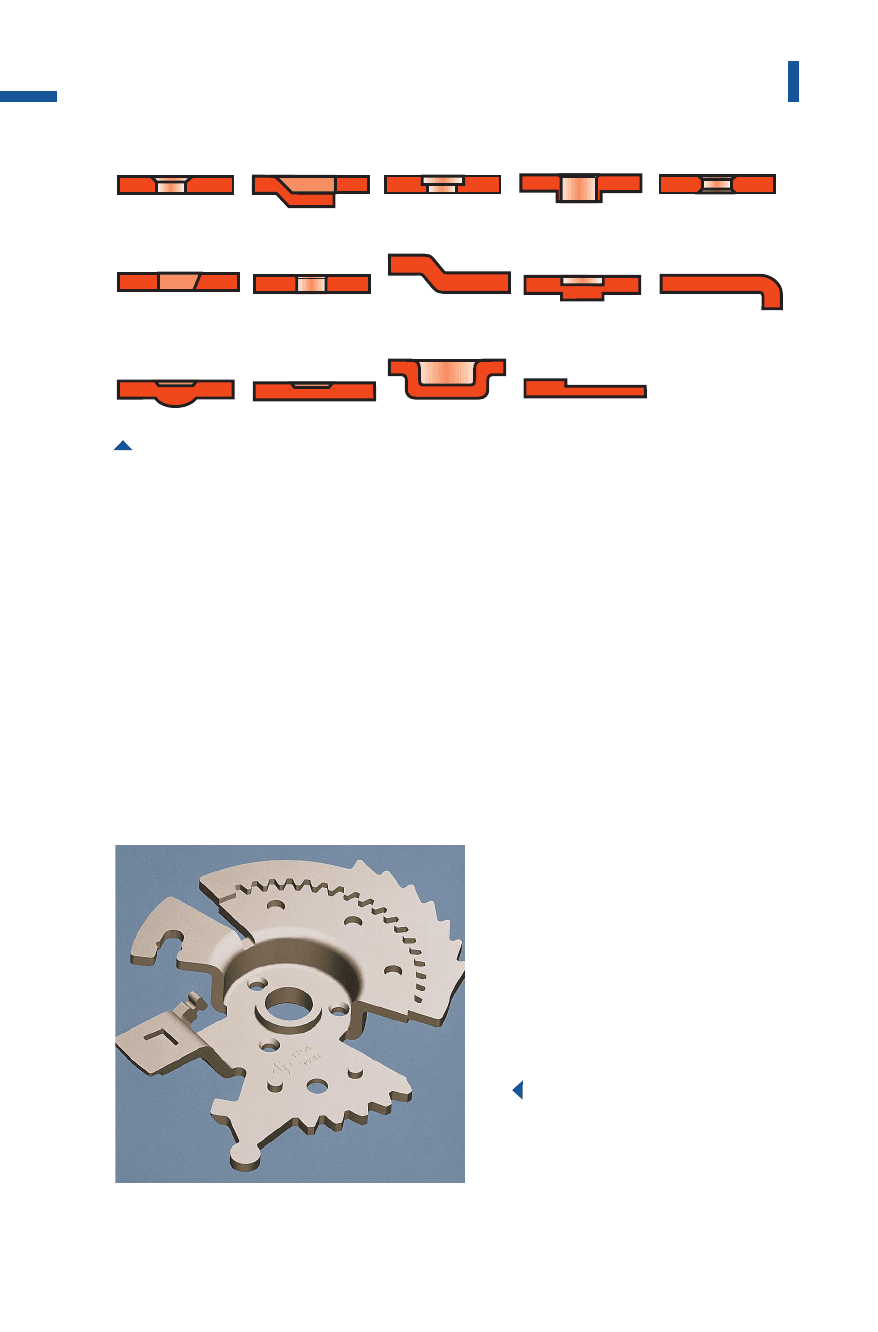
Properties of the cut surface
The cut surface of fine blanked parts can be blanked smooth over the
entire workpiece thickness (100% of s). However, at times tearing and
fracture may occur. While tearing depends mainly on the microstruc-
ture of the material (Fig. 4.7.10),fracture behavior is influenced by the
magnitude of the blanking clearance (Fig. 4.7.16).
For configuration of the dies and on-line in-process quality control,
the cut surfaces of a part must be described and defined in accordance
with the functional requirements.
346
Sheet metal forming and blanking
Fig. 4.7.14 Examples of different forming techniques which can be combined with
fine blanking
bevelledcut
offsetting
bending
embossing
holewithtapered
countersink
one-sided
shearing
flanging
cylindrical
countersink
holewithcountersink
oneitherside
holewith
roundededges
semi-piercing
weldedbuckle
cupdrawing
coining
Fig. 4.7.15
Fine blanked part featuring the
forming processes semi-piercing,
offsetting, cup drawing, coining,
bending, taper sinking and flanging
Metal Forming Handbook / Schuler (c) Springer-Verlag Berlin Heidelberg 1998
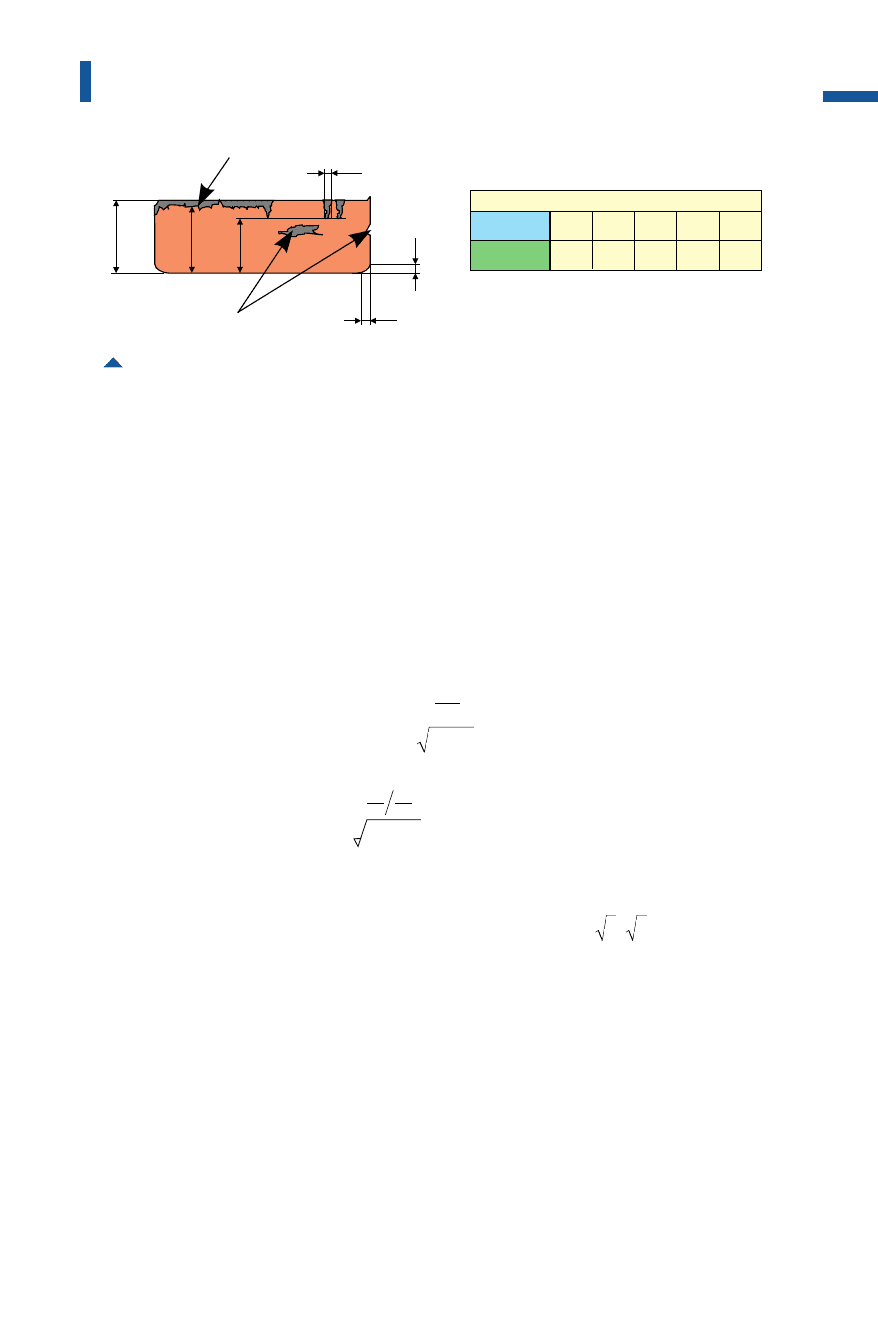
In the part drawing, the designer is required to define the necessary
smooth cut ratios, surface roughness characteristics, admissible tearing,
die-roll heights and widths and also blanking burr formation. The spec-
ifications are made either on the basis of the cut surface standard
according to VDI 3345
or as per VDI 2906 page 5: whereby E represents the admissible
degree of tearing according to VDI 3345 in accordance with no. 1, 2, 3
or 4. In order to avoid the need for repeated complex specifications, the
blanked surfaces are marked with simple symbols , starting
with the last letter of the alphabet (z). The length of the cut surface is
indicated by a dotted line (Fig. 4.7.17).
Dimensional and form tolerances
The achievable tolerance levels depend on the material, the workpiece
thickness and geometrical shape of the part. The blanking press, the die
and the lubricant used are also significant in determining the achiev-
able part quality. The guideline values for achievable tolerances are
indicated in Table 4.7.2.
347
Fine blanking
Fig. 4.7.16 Terms defining the fine cut surface:
h
S1
min. smooth cut section in % of the sheet metal thickness s in case of fracture;
h
S2
min. smooth cut section in % of the sheet metal thickness s in case of shell-
shaped fracture; b
A
shell-shaped fracture width (sum of all b
A
can be defined as
required by the user); h
E
die-roll height; b
E
die-roll width; E admissible tear in
accordance with VDI Guidline 3345/2906 part 5 relative to size no. 1, 2, 3 or 4
s
achievable smooth cut ratio
tearing E
fracture
h
S2
h
E
b
E
h
S1
b
A
h/sin%
S1
h/sin%
S2
100 100
90
90
75
75 50
R
a
h
S
h
S
E
1
2
R
ZDIN
h
s
h
s
E
SS12
z
y
,,…
()
Metal Forming Handbook / Schuler (c) Springer-Verlag Berlin Heidelberg 1998
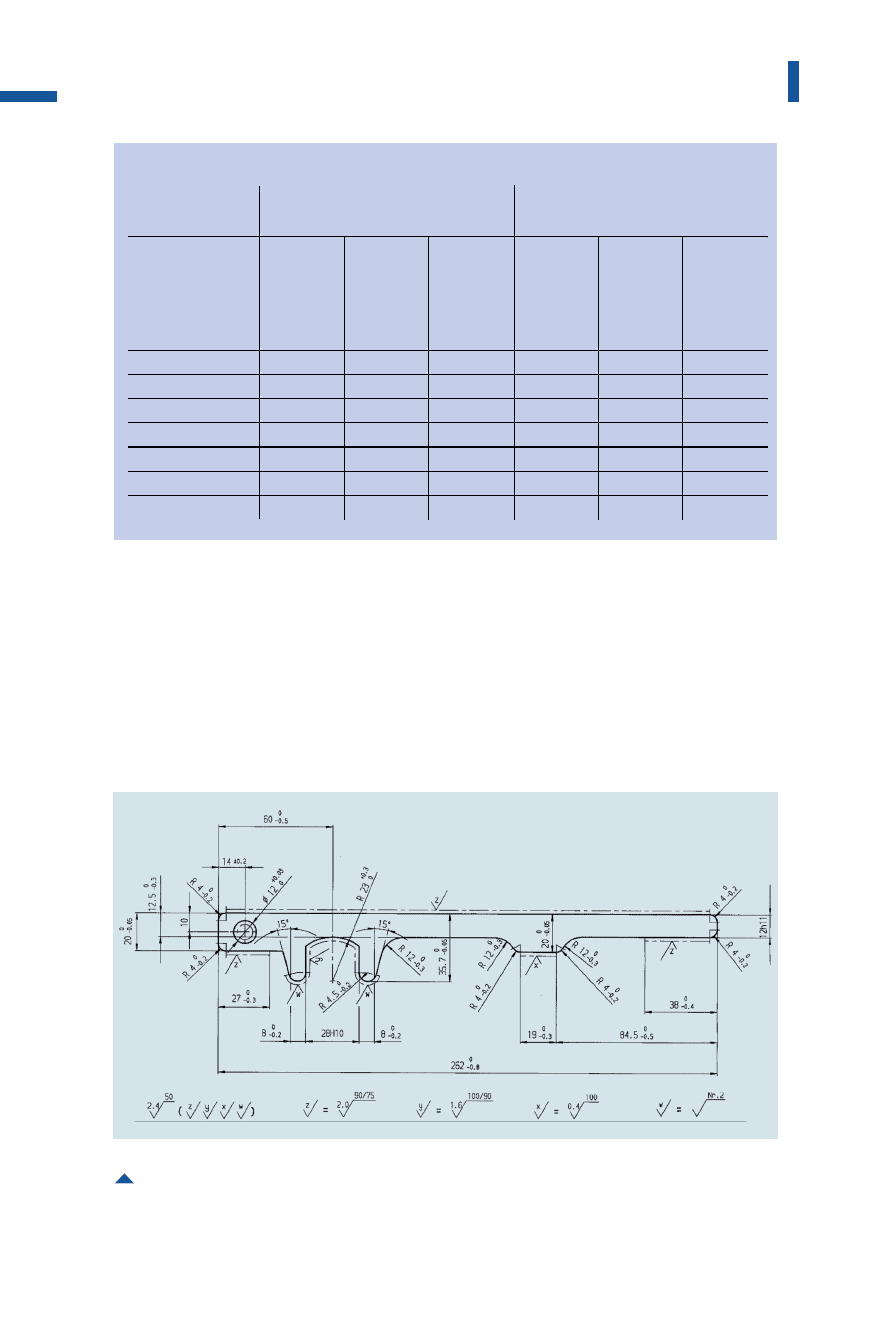
Table 4.7.2: Achieveable tolerances in fine blanking
Sheet metal
thickness [mm]
0.5 to 1 6 to 7 7 ± 0.01 7 8 ± 0.01
1 to 2 7 7 ± 0.015 7 to 8 8 ± 0.015
2 to 3 7 7 ± 0.02 8 8 ± 0.02
3 to 4 7 8 ± 0.02 8 9 ± 0.03
4 to 5 7 to 8 8 ± 0.03 8 9 ± 0.03
5 to 6 8 9 ± 0.03 8 to 9 9 ± 0.03
> 6 8 to 9 9 ± 0.03 9 9 ± 0.03
Inside
contours
ISO
quality
Outside
contours
ISO
quality
Hole
distance
tolerances
[mm]
Inside
contours
ISO
quality
Outside
contours
ISO
quality
Hole
distance
tolerances
[mm]
Tensile strength over 500 N/mm
2
Tensile strength up to 500 N/mm
2
The die-rollwith its width b
E
and height h
E
depends on a variety of
blank and material-related factors (Fig.4.7.8, 4.7.16and 4.7.18).The
angle and radius of inward and outward pointing corners, the material
and the microstructure, strength and sheet metal thickness, for instance,
exert a considerable influence. Also important in determining the die-
roll amount is the edge preparation of the blanking plate and inner form
348
Sheet metal forming and blanking
Fig. 4.7.17 Example dimensions for a fine blanked part in accordance with VDI 3345
Metal Forming Handbook / Schuler (c) Springer-Verlag Berlin Heidelberg 1998
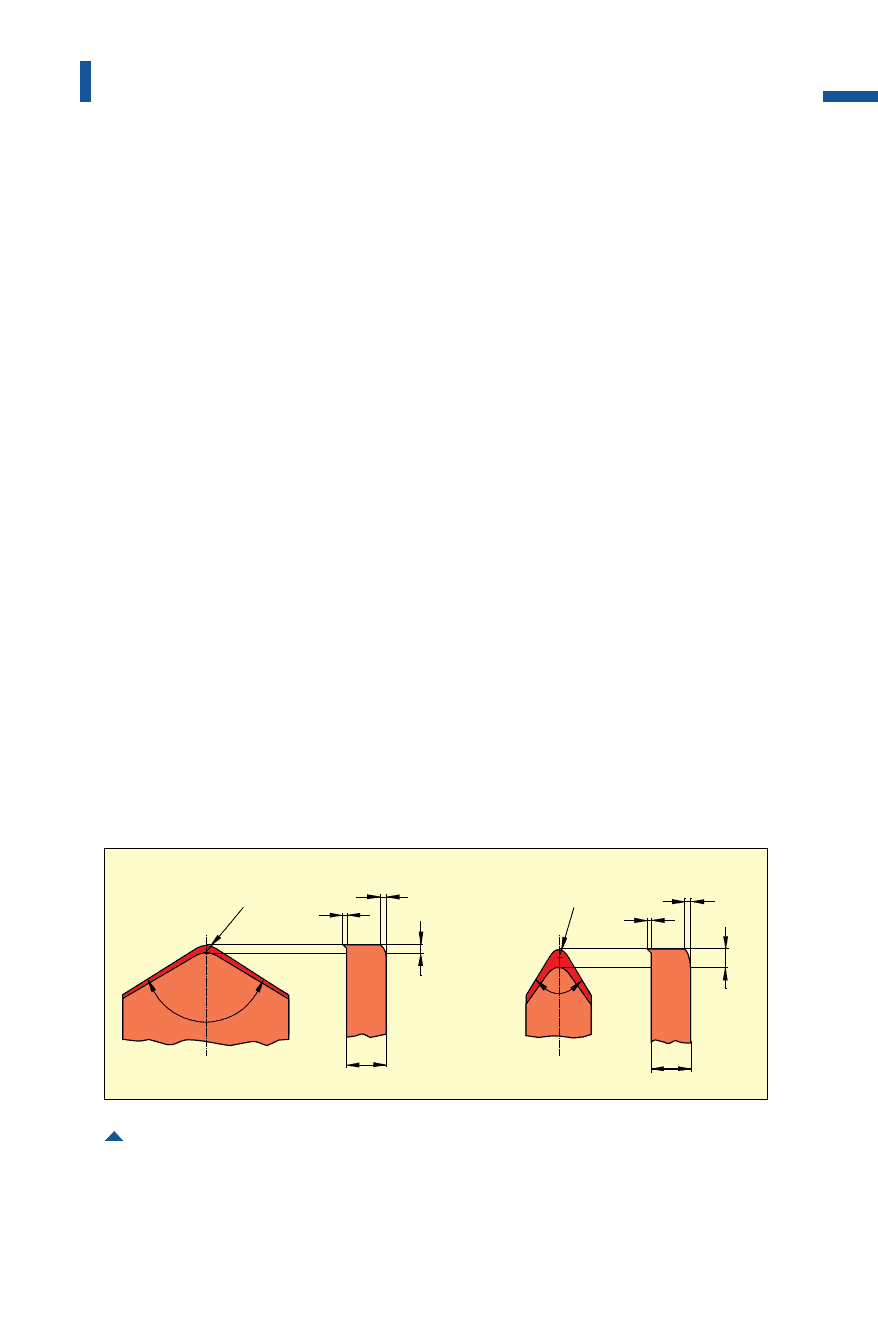
punches, as well as the effect of the vee-ring. The die-roll width b
E
depends on the die-roll height h
E
. In most cases, the following applies:
Burr-free fine blanking is not possible. The blanking burris located
opposite to the die-roll, and occurs as soon as the first part is blanked
due to edge preparation at the blanking plate and the blanking punch.
As a result of wear of the active elements, the height and width of the
burr increase with the increasing number of blanking operations. The
blanking burr is generally removed by belt or flat grinding.
The cut surfacesare not at absolute right angles to the plane of the
sheet metal. The outside contours of a blank on the burr side are greater
than at the die-roll side – inner contours are smaller on the burr side
than on the die-roll side. As a guideline, the difference amounts to
0.0026mm per 1mm of blank thickness, and depends on a number of
influencing variables, such as dimensioning of the blanking plate, con-
figuration of the blanking plate with or without shrink ring, prepara-
tion and coating of active elements.
Application examples
The following pictures provide examples of fine blanked parts. In
Fig. 4.7.19,an automatic car transmission is illustrated to indicate the
349
Fine blanking
bhmm
EE
≈⋅
[]
5
Fig. 4.7.18 Geometry and die-roll on a fine blanked part:
R corner radius; b
E
die-roll width;
β
corner angle;
s blank thickness; h
G
burr height; h
E
die-roll height
R
R
h
G
h
G
h
E
h
E
b
E
b
E
s
s
bb
Metal Forming Handbook / Schuler (c) Springer-Verlag Berlin Heidelberg 1998
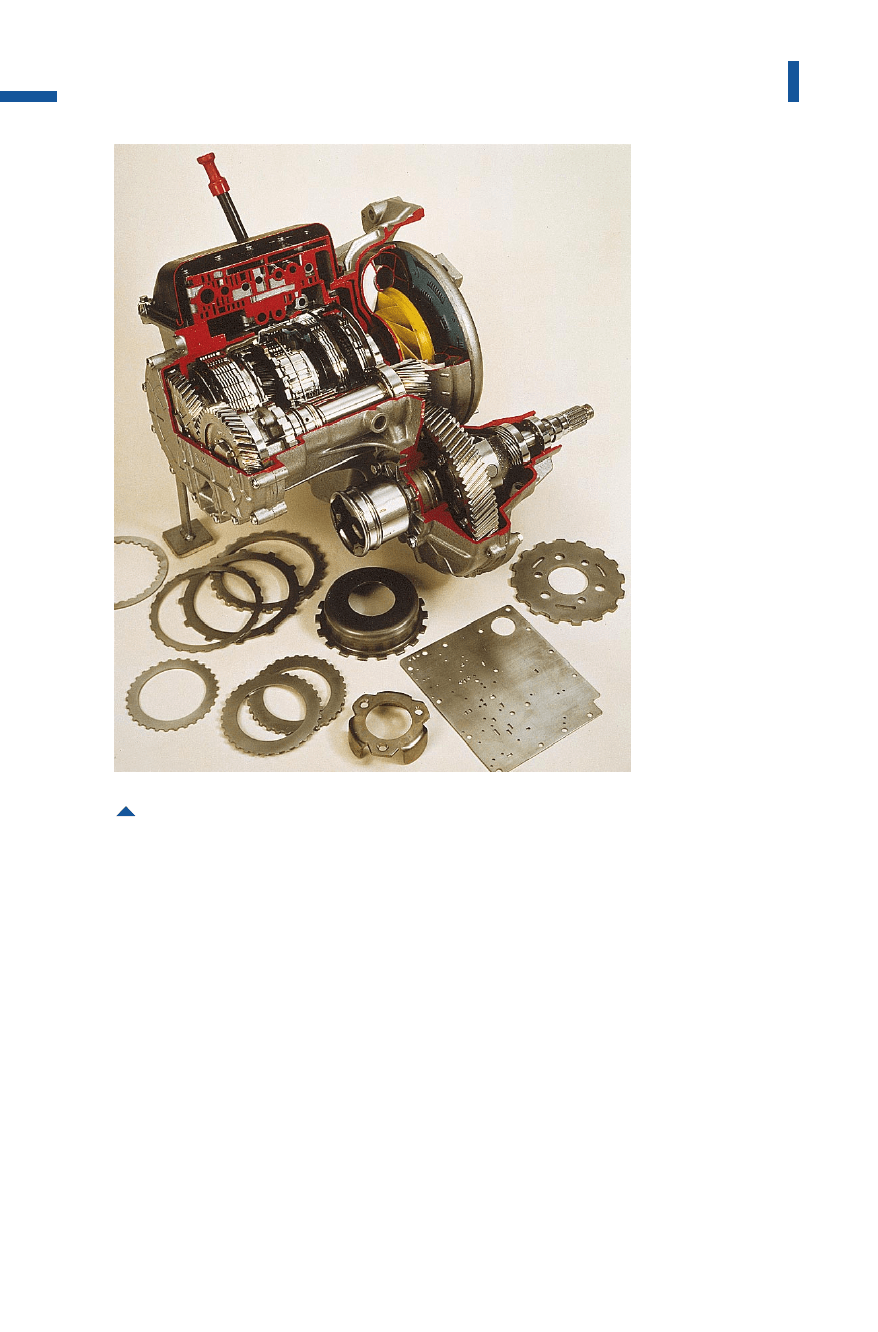
variety of fine blanked parts. High demands concerning cut surface
quality, dimensional tolerances and flatness are required from the lam-
inations, drive boxes and intermediate plates. Extremely small holes in
the intermediate plate are also fine blanked, although the s/d ratio lies
at around 2.
Several fine blanked parts are also required for subassemblies used in
the brake and drive system (Fig.4.7.20),for instance brake disks with
their many holes which have a diameter smaller than half the sheet
metal thickness. These small perforations could not be executed using
standard blanking methods. In addition, a tear and fracture-free cut
surface is essential in order to avoid notching effects, as the disks are
350
Sheet metal forming and blanking
Fig. 4.7.19 Fine blanked components in the automatic transmission of a passenger car
Metal Forming Handbook / Schuler (c) Springer-Verlag Berlin Heidelberg 1998
